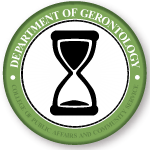Document Type
Report
Publication Date
3-2023
Abstract
The 2022 End-of-Life survey is a continuation by the Nebraska Hospice and Palliative Care Association (NHPCA) to understand the knowledge, beliefs, and actions of Nebraskans and their end-of-life (EOL) wishes. Previous surveys conducted in 2003, 2006, 2010, and 2017 helped to inform the 2022 survey. Results of previous surveys can be found on the NHPCA website. The University of Nebraska-Lincoln Bureau of Sociological Research contracted with NHPCA to prepare, distribute, and enter survey data for a random sample of Nebraskans 19 years of age and older. Survey invitations were sent to 3,000 Nebraskans 19 years of age and older in one of six regions to ensure adequate representation across the state. Weighting was used to make certain of adequate representation by age and sex. Weighting was not used for oversampling for race or ethnicity. Behavioral health regions are shown on page five highlighting the statewide nature of this survey. Surveys were evenly distributed and completed throughout these regions. Respondents were provided with two options for completing the survey: online using a Qualtrics survey or on paper. 635 adults completed the survey. 490 were completed on paper and 145 surveys were completed online. The response rate for the 2022 survey was 21%. Secondary analysis of the data was completed by University of Nebraska at Omaha, Creighton University, and University of Nebraska Medical Center faculty, staff, and doctoral students. Findings from this analysis are on the pages that follow. Included in this report are key findings from the 2022 survey. Respondent demographics, knowledge of hospice care and knowledge of palliative care are presented separately. Also presented are respondents’ desired preference for where to receive hospice care, knowledge of payment sources for hospice care and palliative care, and their interest in learning more about hospice care and palliative care. We also include highlights of respondents’ attitudes about death and illness along with the completion of EOL planning documents. Information about income is presented based on a combination of Internal Revenue Service Tax Brackets from 2022, the 2022 Federal Poverty level, and average Social Security payments for 2022. Because the 2022 survey took place at the end of a global pandemic, we have included select items from the 2017 survey to compare with the 2022 results. The purpose for including this additional information is to see if any changes in awareness of services and/or usage occurred between the two time periods. This issue, raised by a member of this team and the nursing community, emphasizes the importance of EOL care in relation to the pandemic. What do people know and how does this influence their attitudes about EOL care? While no definitive conclusions can be drawn from these results, they do offer insight into the attitudes of responding Nebraskans to the state of hospice care and palliative care and provide a roadmap for future survey questions.
Recommended Citation
Masters, Julie L.; Kirkpatrick, Amanda; Kovaleva, Mariya; Sayles, Harlan; and Josh, Patrick, "Key Finding of the 2022 Nebraska End-of-Life Survey: A Report for Nebraska Hospice and Palliative Care Association" (2023). Gerontology Faculty Publications. 5.
https://digitalcommons.unomaha.edu/gerontologyfacpub/5

